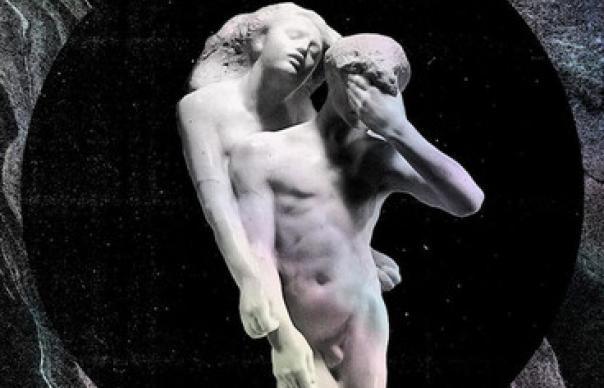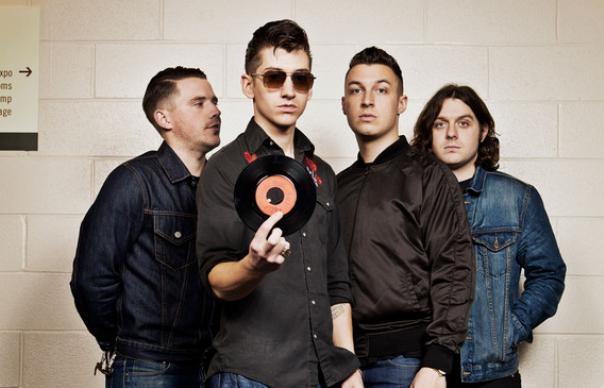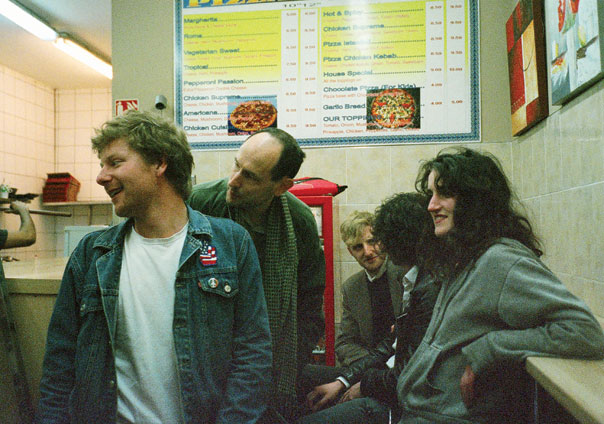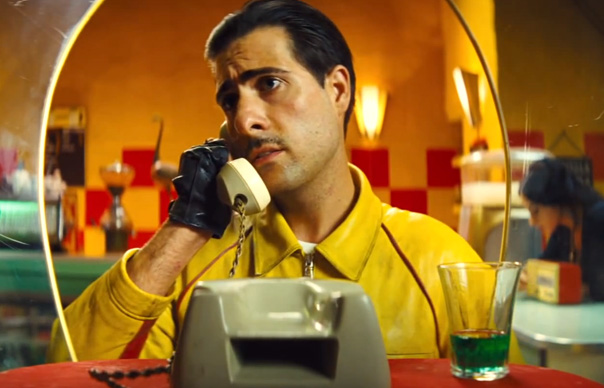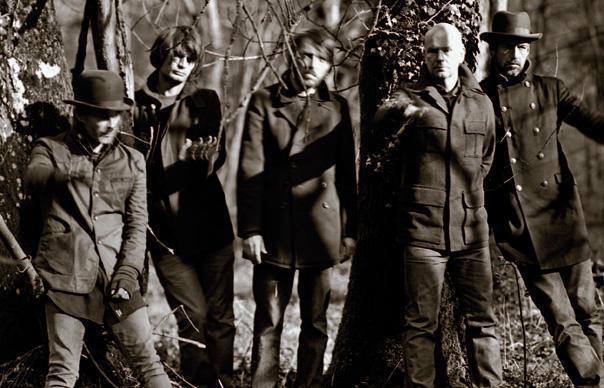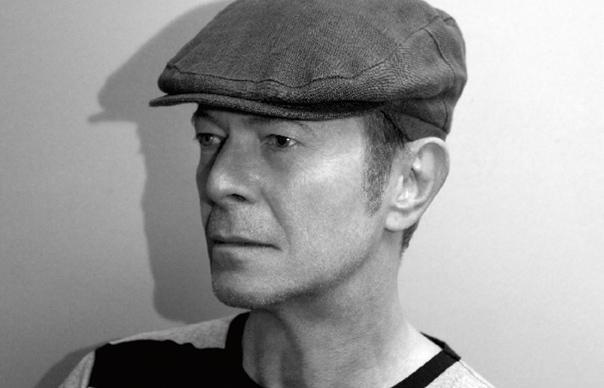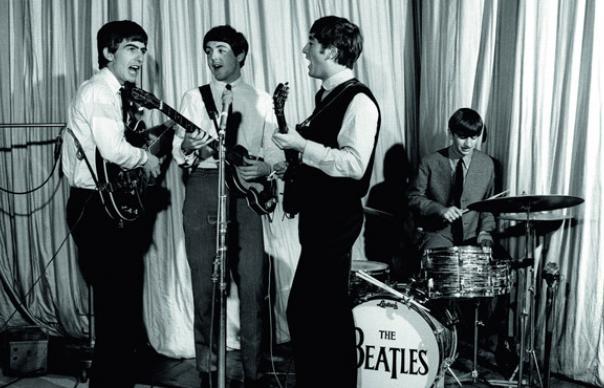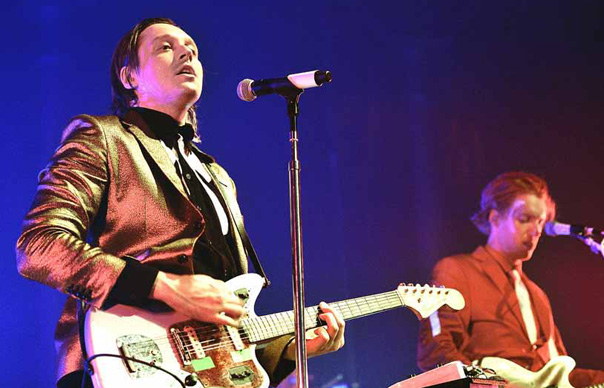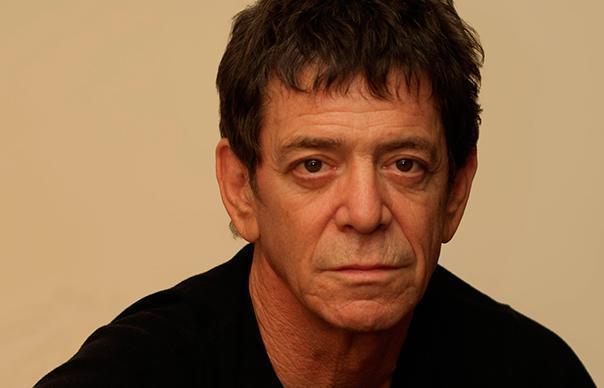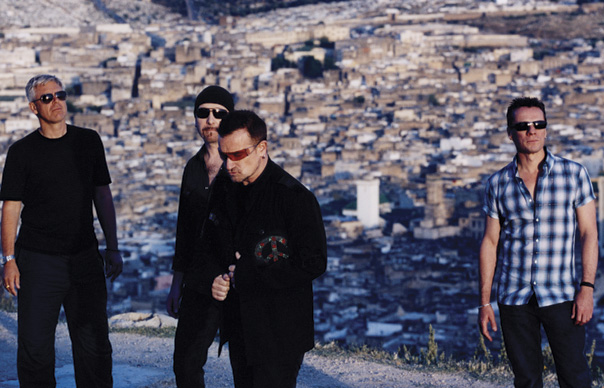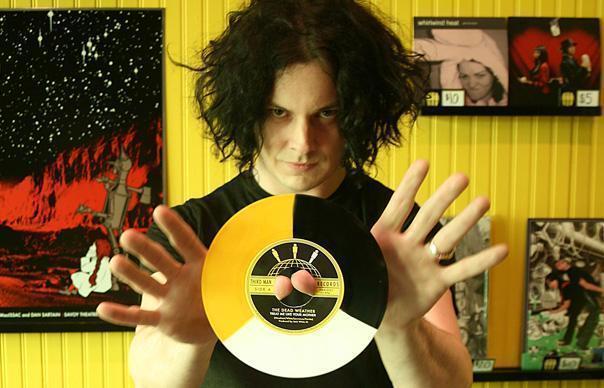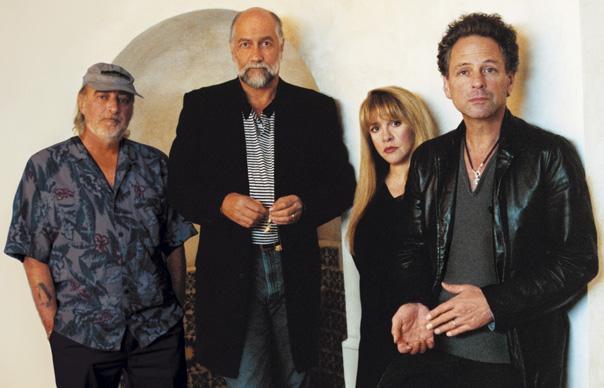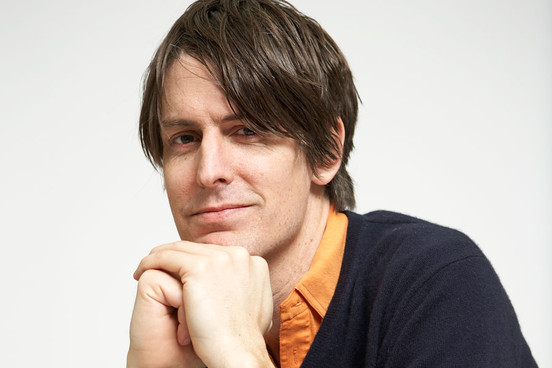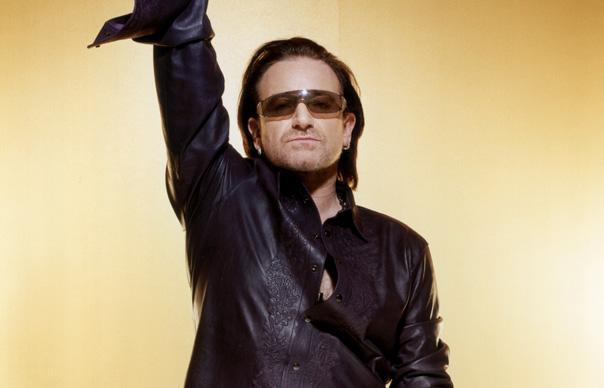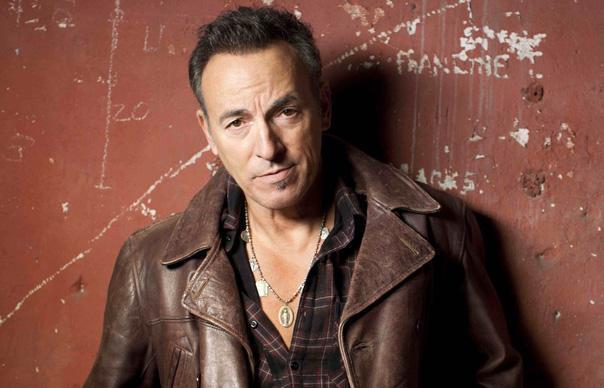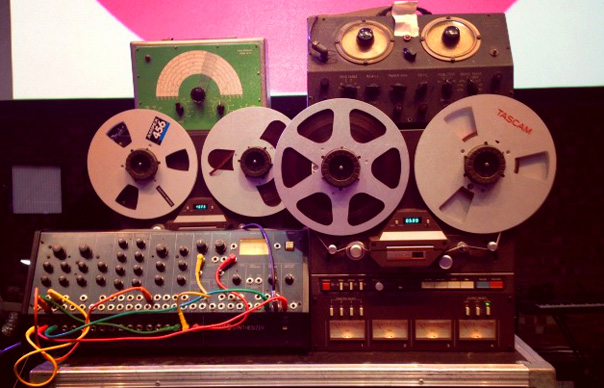A grand - sometimes cacophonous - inquisition into what comes next... Sooner or later, it all comes down to intimations of mortality, musings on the impermanence of life and thoughts on what comes next, if indeed there is a next. Reflektor, the Arcade Fire’s fourth album, is full of such reflections. It's an album wracked with theological doubt and the agonies of bereavement, right from when the title track strides in on an electro pulse pickled with congas, and Win Butler proclaims, "If this is Heaven, I don't know what it's for/If I can't find you there, I don't care." Something, or rather somebody, has been lost, and that loss has had its domino effect, sending emotions tumbling in those left behind. But of course, it's not as simple as it seems, with Butler going on to reveal, "We fell in love when I was 19, I was staring at a screen." What sort of relationship was this? An erotic fixation with a distant screen icon? A Skyped liaison dangereuse? Or maybe just a narcissistic obsession with his own reflection? Questions, questions... As always with Arcade Fire, the meaning slips in and out of focus, but there's always a nagging return to the same concerns. Here, it's matters of mortality, departure, escape, return, whether it's the glam-rock boogie tribute to the martyred "Joan Of Arc" ("They put you down 'cos they got no heart"), or the further post-life ponderings of "Here Comes The Night Time", which speeds up and slows down abruptly before it's even started, eventually settling into a jerky, juddering two-step rhythm with oddball, offbeat piano and what sounds like steel pans. "If there's no music in Heaven, then what's it for?" asks Butler, going on to castigate missionaries for imposing their morality on others. Heaven, he believes, is "behind a gate, they won't let you in". But as he suggests, is it a party worth crashing? Doesn't the other DJ have all the best tunes? These and similar issues are broached throughout a sprawling double-album that's equal parts hardcore electro-rock, Talking Heads-style arty party album and vertiginous sonic maelstrom, eventually reaching some sort of conclusion with the penultimate track "After Life", a swirling dub-funk groove in which Butler claims, "After life, I think I saw what happens next". And what happens next, judging by the closing "Supersymmetry", is memory: "I know you're living in my mind," he sings. "It's not the same as being alive." The rolling momentum of organ, electric piano and congas gradually recedes, morphing into a closing passage of mild drone textures that doubles the track's length to 11 minutes, like evanescent, ghostly spirits flitting into the aether. So this is how the world ends: not with a beat but a whisper. In between these musings on mortality, Reflektor spurts off in various directions. "We Exist" strides in on a bassline that recalls "Black Is Black", with layer upon layer of banked keyboards building to a rolling tsunami of sound, overwhelming and possibly over-egged. "Flashbulb Eyes" opens with a harsh, brittle musique concrete of heavily reverbed electronic beats and noise, before settling into a reggae groove, a spiky dub whirlpool of echoing snare and zippy synth sounds. And perhaps the album's standout track, "It's Never Over", bowls along on a big, striding groove assailed by choppy funk guitar and itchy 16th-beat hihats that recall Miles Davis' On The Corner. It's also one of the wisest reflections here, Butler advising, "Seems like a big deal now/But you will get over/When you get older/You will discover it's never over." Then, right at the end, performs a volte-face and admits, "It's over too soon". Both "Normal Person" and "You Already Know" are heralded by bogus live gambits, the former with live ambience and stage platitude ("Thank you guys so much for coming out tonight"), the latter by an MC acclaiming "The fantastic Arcade Fire!" - though both songs soon disappear beneath a barrage of sound, sucked into a maelstrom of shrill guitars and plastered effects. This is a recurring aspect of Reflektor: the majority of tracks come in around the five or six-minute mark, and seem to expand in size along the way, as if the band can't resist adding more and more parts. Perhaps it's a side-effect of having such a big band of musicians: with so many involved, there may be an anxiety about justifying their position in the lineup. Some of these tracks would be vastly improved by paring away some of the swaddling layers of sound. "Awful Sound", for instance, starts out like a rolling Sun Ra-style drum processional with strings and sparse acoustic guitar chords, but soon drowns in waves of encumbering sound. But while the overall sound is massive, it's become somewhat restricted in tone and texture, most tracks careering towards climaxes of cacophonous synth whines and heavy rock guitars, a narrower palette than on previous albums. It's undeniably imposing, and typically impressive. But you know what? I sort of miss the hurdy-gurdies. Andy Gill
A grand – sometimes cacophonous – inquisition into what comes next…
Sooner or later, it all comes down to intimations of mortality, musings on the impermanence of life and thoughts on what comes next, if indeed there is a next. Reflektor, the Arcade Fire’s fourth album, is full of such reflections. It’s an album wracked with theological doubt and the agonies of bereavement, right from when the title track strides in on an electro pulse pickled with congas, and Win Butler proclaims, “If this is Heaven, I don’t know what it’s for/If I can’t find you there, I don’t care.” Something, or rather somebody, has been lost, and that loss has had its domino effect, sending emotions tumbling in those left behind. But of course, it’s not as simple as it seems, with Butler going on to reveal, “We fell in love when I was 19, I was staring at a screen.” What sort of relationship was this? An erotic fixation with a distant screen icon? A Skyped liaison dangereuse? Or maybe just a narcissistic obsession with his own reflection? Questions, questions…
As always with Arcade Fire, the meaning slips in and out of focus, but there’s always a nagging return to the same concerns. Here, it’s matters of mortality, departure, escape, return, whether it’s the glam-rock boogie tribute to the martyred “Joan Of Arc” (“They put you down ‘cos they got no heart”), or the further post-life ponderings of “Here Comes The Night Time“, which speeds up and slows down abruptly before it’s even started, eventually settling into a jerky, juddering two-step rhythm with oddball, offbeat piano and what sounds like steel pans. “If there’s no music in Heaven, then what’s it for?” asks Butler, going on to castigate missionaries for imposing their morality on others. Heaven, he believes, is “behind a gate, they won’t let you in”. But as he suggests, is it a party worth crashing? Doesn’t the other DJ have all the best tunes?
These and similar issues are broached throughout a sprawling double-album that’s equal parts hardcore electro-rock, Talking Heads-style arty party album and vertiginous sonic maelstrom, eventually reaching some sort of conclusion with the penultimate track “After Life”, a swirling dub-funk groove in which Butler claims, “After life, I think I saw what happens next”. And what happens next, judging by the closing “Supersymmetry“, is memory: “I know you’re living in my mind,” he sings. “It’s not the same as being alive.” The rolling momentum of organ, electric piano and congas gradually recedes, morphing into a closing passage of mild drone textures that doubles the track’s length to 11 minutes, like evanescent, ghostly spirits flitting into the aether. So this is how the world ends: not with a beat but a whisper.
In between these musings on mortality, Reflektor spurts off in various directions. “We Exist” strides in on a bassline that recalls “Black Is Black”, with layer upon layer of banked keyboards building to a rolling tsunami of sound, overwhelming and possibly over-egged. “Flashbulb Eyes” opens with a harsh, brittle musique concrete of heavily reverbed electronic beats and noise, before settling into a reggae groove, a spiky dub whirlpool of echoing snare and zippy synth sounds. And perhaps the album’s standout track, “It’s Never Over”, bowls along on a big, striding groove assailed by choppy funk guitar and itchy 16th-beat hihats that recall Miles Davis’ On The Corner. It’s also one of the wisest reflections here, Butler advising, “Seems like a big deal now/But you will get over/When you get older/You will discover it’s never over.” Then, right at the end, performs a volte-face and admits, “It’s over too soon”.
Both “Normal Person” and “You Already Know” are heralded by bogus live gambits, the former with live ambience and stage platitude (“Thank you guys so much for coming out tonight”), the latter by an MC acclaiming “The fantastic Arcade Fire!” – though both songs soon disappear beneath a barrage of sound, sucked into a maelstrom of shrill guitars and plastered effects. This is a recurring aspect of Reflektor: the majority of tracks come in around the five or six-minute mark, and seem to expand in size along the way, as if the band can’t resist adding more and more parts. Perhaps it’s a side-effect of having such a big band of musicians: with so many involved, there may be an anxiety about justifying their position in the lineup. Some of these tracks would be vastly improved by paring away some of the swaddling layers of sound. “Awful Sound“, for instance, starts out like a rolling Sun Ra-style drum processional with strings and sparse acoustic guitar chords, but soon drowns in waves of encumbering sound.
But while the overall sound is massive, it’s become somewhat restricted in tone and texture, most tracks careering towards climaxes of cacophonous synth whines and heavy rock guitars, a narrower palette than on previous albums. It’s undeniably imposing, and typically impressive. But you know what? I sort of miss the hurdy-gurdies.
Andy Gill


